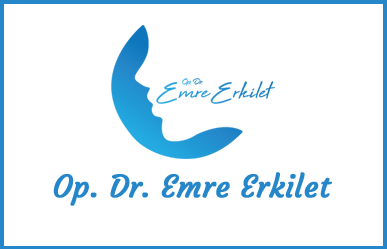Rhinoplasty (Nose Surgery)
Last Update : 24-11-2023
Rhinoplasty (Nose Surgery)
The nose is a prominent facial feature, and its appearance plays a significant role in the overall facial aesthetic. Rhinoplasty is a surgical procedure that reshapes and reconstructs the nose. During this surgery, any problems causing nasal obstruction, such as deviated nasal septum and nasal turbinate enlargement (concha hypertrophy), can also be corrected. The goal of rhinoplasty is to improve the nose both aesthetically and functionally.
Anatomy of the Nose
The nose consists of layers from the outside to the inside: skin, subcutaneous tissue, muscles, bone-cartilage framework, and mucous membrane. Inside the nose, there is a wall made of cartilage and bone, known as the septum, which separates the right and left nostrils. On the side walls of the nasal cavity, there are structures called turbinates, responsible for humidifying and heating inhaled air. The thickness of the nasal skin is one of the most critical factors determining the results of the surgery. In post-operative periods, fine changes under thin skin are more visible, while thick skin can mask some of the changes. The best results are achieved with noses of moderate skin thickness.
What is the Goal of Rhinoplasty?
The primary goal of the surgery is to create a nose that is harmonious with the rest of the face, looks natural, and does not appear to have undergone surgery. The old-fashioned, upturned, and overly scooped noses that expose the nostrils are no longer preferred. While each surgery aims for better results, expecting perfection from every surgery is not realistic. Rhinoplasty results depend not only on the surgeon's skill and experience but also on the patient's age, overall health, skin condition, bone structure, smoking habits, scar healing, and anatomical features.
At What Age Can Rhinoplasty Be Performed?
Patients who have reached 18 years of age and completed their growth are considered suitable candidates for cosmetic nose surgery.
How Is Patient Selection Done?
Patient selection before rhinoplasty is a crucial step. It is essential to ask the patient why they want to have the surgery. People who have unrealistic expectations, such as wanting to look like celebrities and bringing photos of them to the consultation, need to have their expectations discussed in detail and brought to a more realistic level. Patients are provided with accurate and truthful information about the surgery. Photos are taken, and the surgeon and patient discuss the desired shape together. Computer imaging allows the surgeon and patient to share their ideas and reach a consensus on the expected outcome. It is important to note that the images on the computer do not guarantee an exact and definite result; patients should be aware of this.
The most significant benefit of the preoperative consultation is to clarify the patient's expectations and the extent to which the surgeon can meet these expectations. Patients often act based on their inherent perceptions of beauty, influenced by social, cultural, and community factors. Patients' perspectives are often shaped by their subjective opinions of what constitutes a beautiful nose. The surgeon's task is to create a nose that the patient, society, and the surgeon themselves will like. The surgeon evaluates what points the patient takes into consideration and whether they have realistic expectations or unusual views. To do this, the surgeon considers personal judgments, specific rules, proportions, angles, and geometric relationships. Cartilage structure, existing scars, the patient's age, gender, and skin character are also assessed. After aesthetic and anatomical evaluations, a surgical plan is prepared, and the technique that best suits the patient's ideal nose is chosen.
How Long Does the Surgery Take?
The duration of rhinoplasty surgery varies depending on the structure of the nose and any accompanying pathologies, usually taking between 2 to 4 hours.
How Is Postoperative Follow-Up Conducted?
Rhinoplasty results are reasonably predictable. The patient is examined more frequently, especially in the first three weeks, as needed. The routine follow-up protocol typically includes examinations at 1 month, 3 months, 6 months, and 1 year post-surgery.
What Are the Costs of Rhinoplasty?
For more detailed information, appointments, and pricing details, please contact us:
0 530 852 852 2
kbb@emreerkilet.com.tr


